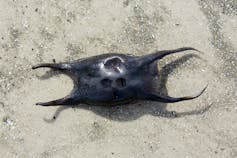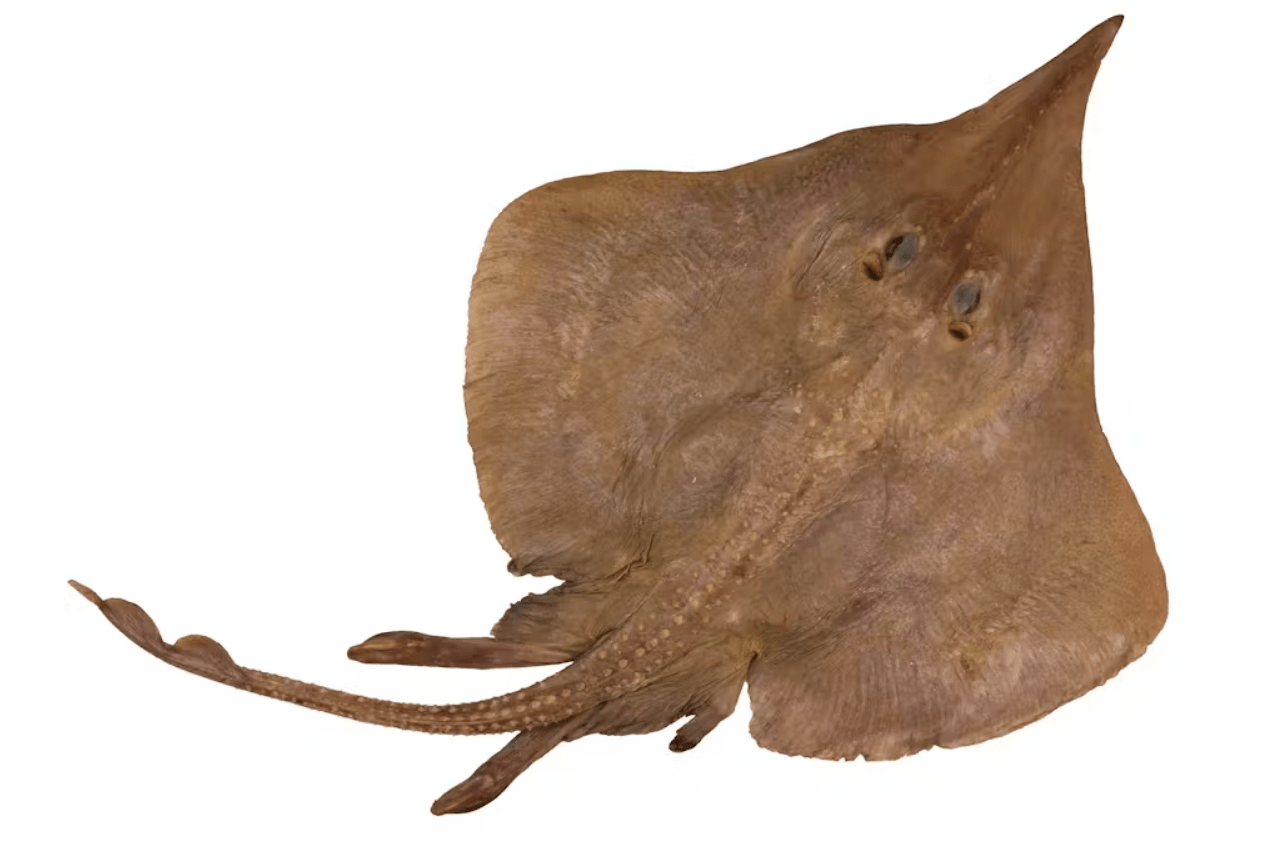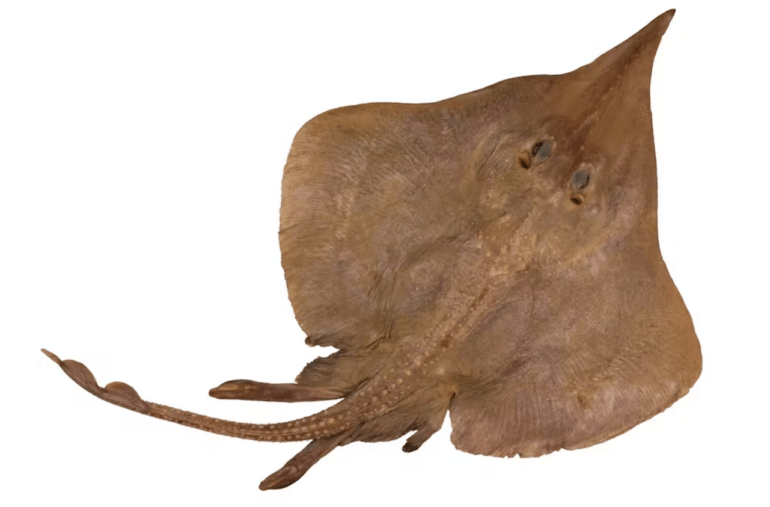The Madagascar Ridge, in the southwestern Indian Ocean, is a remote, elevated area of seabed south of Madagascar. In 2016, my colleagues and I discovered a new cartilaginous fish species in its deep waters; a catshark that we named Bach’s catshark (Bythaelurus bachi) after German composer Johann Sebastian Bach. (In 2017 we discovered another new deep-water catshark that’s very similar to B. bachi but from the northwestern Indian Ocean off Somalia. We named it Bythaelurus vivaldii after another composer, Italian Antonio Vivaldi.)
Sharks, rays and skates are all examples of cartilaginous fish; their skeletons are primarily composed of cartilage, not bone.
Now we can add another new species from the Madagascar Ridge to our list of finds in African waters. We recently published a journal article describing the species, which we’ve named the Brown longnose skate (its scientific name, longirostris, means long, stiff snout – its most immediately visible defining feature). To date, both new species have only been found on the southern end of the Madagascar Ridge, and have not been recorded anywhere else in the world.
Though this is exciting it also raises concerns. The International Union for Conservation of Nature (IUCN) Red List of Threatened Species estimates that, collectively and globally, 37% of shark, skate and ray species are currently threatened with extinction. Some skates are caught in targeted fisheries but the main threat they face is becoming by-catch of fisheries targeting bony fishes.
Because we know so little about Leucoraja longirostris, it’s hard to understand what risks it might face from fisheries. However, we know from other examples elsewhere in the world that deep-water species like the Brown longnose skate battle to withstand intensive fishing pressure. That’s because, generally, deep-sea fish grow slowly, mature late and have a low reproductive rate.
Further research is essential. Scientists must learn more about this and other skate species’ distributions, life histories, population sizes and trends, as well as the threats they face. This will not just fill in knowledge gaps: it can lead to more effective conservation and management policy decisions.
Skates
The smallest skate, the Cuban pygmy skate (Fenestraja cubensis) reaches a tiny maximum total length of 23 cm. The largest, the Roughskin skate (Dipturus trachyderma) can grow to a total length of 264 cm.
However, although some skate species and their famous egg cases, affectionately known as mermaid’s purses, are rather well-known to the public, many are poorly known even among scientists.

Arterra
Many species are only found in deep waters – even recorded down to a depth of more than 4,000 meters. At this depth, known as the abyssal zone, the pressure is about 400 atmospheres, or 400 times greater than the pressure at sea level. Very few fish species enter such depths.
In 1988/89, a large expedition was carried out by the Russian research vessel Vityaz, which sampled many areas in the deep western Indian Ocean, and during which a large number of interesting cartilaginous fish species were found. I became interested in this material more than a decade ago and began researching the fish species that live on the floor of the Madagascar Ridge. Most of the material is held in the Zoological Museum of the Centre for Taxonomy and Morphology of the Leibniz Institute for the Analysis of Biodiversity Change in Hamburg, Germany.
It was while studying this material that my colleagues and I identified the Bach’s catshark and the Brown longnose skate; there were specimens of both from the 1988/89 expedition but these had not been studied completely.
The new species
L. longirostris is uniformly brown above, like many other skate species living in dark, deep waters, where pronounced colour patterns are not really necessary. Rays and skates from shallower waters often use colour patterns to camouflage or to warn predators that they’re not safe to eat; in the deep sea this isn’t needed.
L. longirostris can be distinguished from other skate species by its long snout and many other anatomical features. These include morphometrics (the measurement of living organisms and their parts) and meristic counts (countable traits such as number of tooth rows, vertebrae, fin rays etc.).
The claspers are another important characteristic. These are paired organs that male cartilaginous fish use to assist the transfer of sperm into the body of the female during copulation.
Species are grouped within genera and genera are grouped within families. L. longirostris’ claspers allowed us to show what genus it belongs to. The snout, meanwhile, is unique and confirmed that we were dealing with a previously unidentified species.
Risks from fishing
There’s not much information available about fisheries that operate in the area of the Madagascar Ridge, so it’s not possible to precisely quantify the risk to this skate. We assume that the risk isn’t high, since it’s in a rather remote area where it’s difficult to do bottom trawling; the southern Madagascar Ridge’s coral reefs also make it partially jagged.
But we cannot be certain without more data. It will be crucial to learn more about the species to properly understand the risks it faces and to help contribute to conservation efforts. For that to happen, new specimens will need to turn up; we’ve studied and described what is available. In the meantime, I am continuing my research on poorly known cartilaginous fishes, with a special focus on the western Indian Ocean – who knows what still remains to be discovered?![]()
Simon Weigmann, Associated Scientist, Leibniz Institute for the Analysis of Biodiversity Change
This article is republished from The Conversation under a Creative Commons license. Read the original article.












